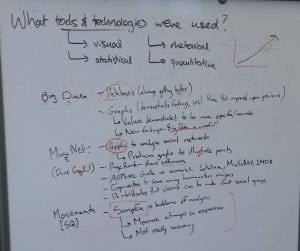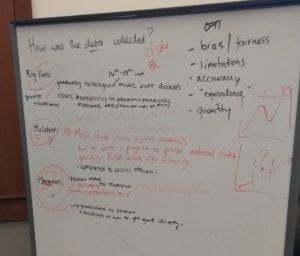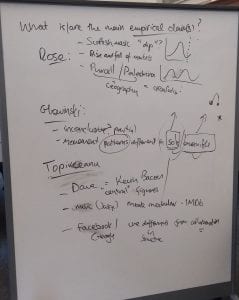Readings:
Response:
The principal assumption behind collaborative filtering for music recommendation is that your listening choices act as an implicit signal not just about your preferences, also the preferences of “listeners like you”. In a short repsonse based on your reading of the two papers (and skimming the slides prepared by an ex-Spotify employee), what are some of the challenges faced by the designers of recommendation systems that use collaborative filtering, and, if possible, suggest ways that this technique can be improved or used in tandem with other approaches to recommendation in order to overcome these problems?


